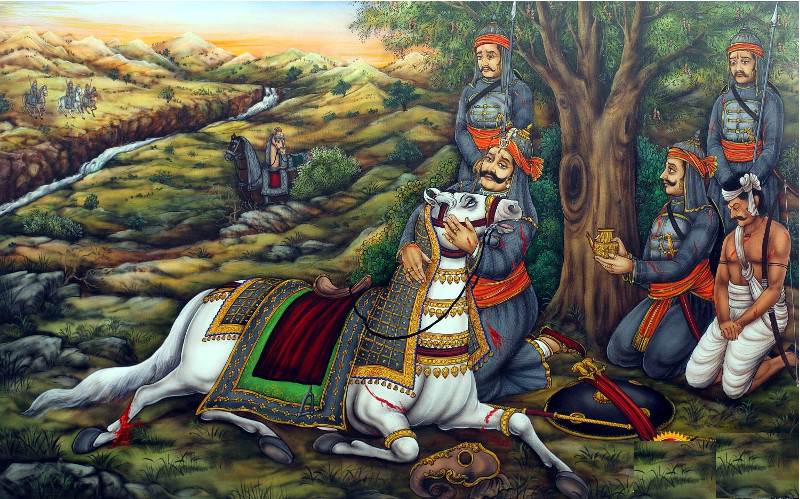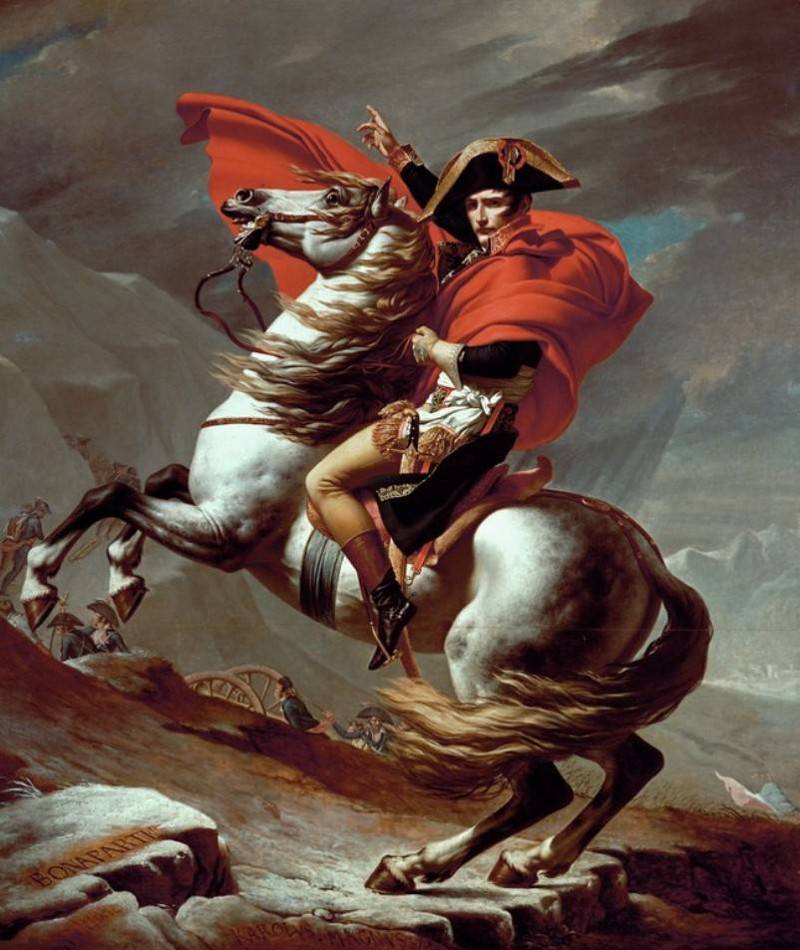3 famous steed in history
Many prominent military rulers in history possessed famous steeds, stormed the battlefield and won great victories.
Chetak

Chetak is one of the famous steed in history. It is owned by King Maharana Pratap . He is the great monarch of Rajputs and also one of the legendary warriors in Indian history.
In the battle between Rajputs and Mughal dynasty, Chetak died in the battle of Haldighati when he fought with King Pratap on June 21, 1576. Later, the monarch built a memorial to commemorate his good-looking horse at the place where he died was Haldighati.
Chetak war strategy also became the subject of poetry, appearing in many ballads and folk tales of local people. Poets also write about Chetak in poems and are described as "blue horses".
Marengo

Marengo is one of the most famous fighting horses of the French emperor Napoleon Bonaparte . The name of this steed was placed by the excellent Napoleon according to the location of Marengo - where Napoleon won a resounding victory over Austria in 1800. In that battle, Marengo showed his great abilities and helped The French emperor returned from the battlefield peacefully.
Manrengo was a horse imported from Egypt into France in 1799. Napoleon rode this horse in many battles such as the battle of Austerlitz, the battle of Jena-Auerstedt, the Wagram battle and the Battle of Waterloo. However, at the Battle of Waterloo, Napoleon defeated the British army.
After that defeat, Manrengo was captured and fell into William Henry Francis's hands - baron Petre 11th. When he returned to England, the baron sold Manrengo to the Lieutenant Colonel Angerstein of the Grenadier Guard. By 1837, Marengo died of aging and his skeleton was preserved intact at the National Military Museum in Chelsea, London, United Kingdom.
Copenhagen

One of the most famous fighting horses on the planet, Copenhagen is the horse of Duke Arthur Wellesley - who led the attack against Emperor Napoleon Bonaparte at the Battle of Waterloo. The name of this steed was named Copenhagen to honor Britain's resounding victory in the second Copenhagen battle.
The Duke of Arthur Wellesley has owned the Copenhagen war horse since 1813. After that, this battle with him took part in many glorious battles. One of Copenhagen's greatest achievements was to bring Duke Arthur Wellesley through the French fire, leading to a resounding victory of British troops at the Battle of Waterloo in 1815.
The Copenhagen War has "retired " after the war ended. Later, she was raised on a farm in London and died on February 12, 1836.
- The most famous bets in the history of science
- 7 famous women history set an impressive record
- The most famous Nobel prizes in history
- The famous horses in Chinese history books
- Background of famous diseases through name marks
- The 10 most famous witches in history
- Top 10 most famous legendary painters in the world
- Famous teachers in Vietnamese history
- The brutal celebrities in history
- Surprise with the true appearance of famous historical figures
- The famous mystery in history has been solved
- The most famous scientific failures in history
 Biography of hero Vu A Dinh
Biography of hero Vu A Dinh History of hematology
History of hematology Who is Mr. Tam Da 'Phuc-Loc-Tho' and what does it mean?
Who is Mr. Tam Da 'Phuc-Loc-Tho' and what does it mean? Unbelievable facts about the history of the oil and gas industry: Gasoline used to be cheaper than water, so abundant that it had to be dumped into the river...
Unbelievable facts about the history of the oil and gas industry: Gasoline used to be cheaper than water, so abundant that it had to be dumped into the river...